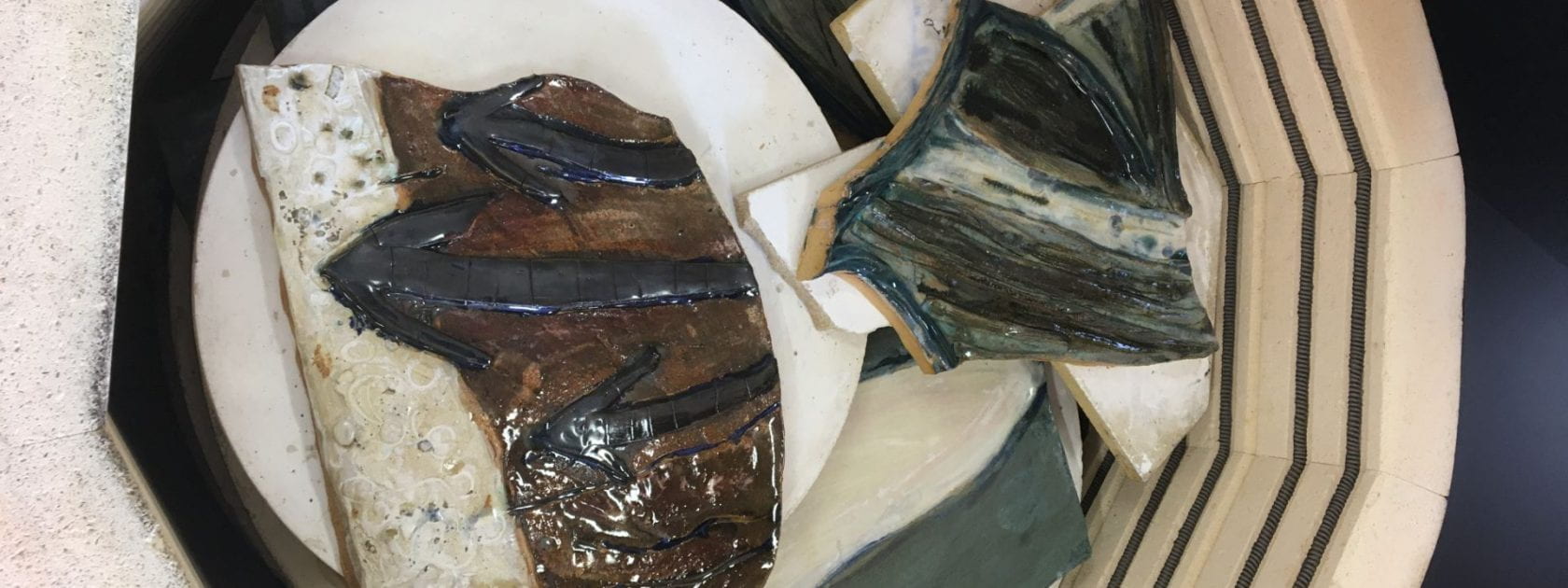By Hayley Brackenridge
Agricultural watersheds are susceptible to nutrient enrichment from fields through various hydrological pathways including surface runoff, tile drainage, and erosion. In particular, increased phosphorous (P) and nitrogen (N) can lead to eutrophication, toxic algal blooms, reduced species abundance and diversity, and impaired drinking water systems (Carpenter et al. 1998, Sharpley et al. 1994). In Ontario, virtually all of the agriculture industry lies within the Great Lakes Basin. As a result, the effects of agricultural watershed nutrient enrichment are magnified downstream in the Great Lakes (OMAFRA 2021).


Streams in an agricultural watershed in Ontario: surrounded by melting snow in the early spring (left) and riparian vegetation in the summer (right). Photo credit: Hannah May.
“The eutrophication of the Great Lakes is an immediate and critical concern”, says Hannah May, a masters student and Food from Thought 2020 HQP Scholar working under the supervision of Dr. Andrew Binns. In the 1960’s, Lake Erie experienced water quality degradation and eutrophication as a result of excessive inputs of P and N, so collective actions were set forth by the federal and provincial governments to reduce nutrient enrichment (ECCC 2019). May says “even with conservation methods, Lake Erie today cannot be recovered to its previous ecological state. Lake Huron is at risk of the same conditions and there is a need to provide fundamental knowledge of nutrient transport in the Great Lakes basins.”
May researches nutrient transportation in a clay dominated agricultural watershed within the Great Lakes Basin. Her work aims to identify the localized zones (“hot spots”) and periods of time (“hot moments”) of intense hydrological activity, as well as understand dominant nutrient transport pathways. Advancing the understanding of watershed systems is fundamental in developing robust strategies for mitigating nutrient enrichment of the Great Lakes under a changing climate.
Watershed conservation requires widespread collaboration as they intersect municipal boarders as a result of their expansive nature. Increasing public awareness of watershed management can promote informed advocacy for local conservation laws. In the context of the GIER arts-based knowledge mobilization project, May connected with Nina Sampson at Ausable Bayfield Conservation Authority (ABCA) and artist Andrea Piller. The ABCA is an independent, corporate body established under the Conservation Authorities Act in Ontario that manages watersheds on the southeast shores of Lake Huron. Sampson’s role as conservation educator with the ABCA is to engage with the community to create awareness around the species and ecosystems of the area. Piller seamlessly completed the team, bringing her unique talent in ceramic sculptural pieces, many of which are inspired by the land, sky, and shorelines of Ontario, weaving together the organic world and different human experiences.


Clay is a major soil component in the agricultural watershed where Hannah May conducts field work (left) and also the predominant material in the team’s arts-based knowledge mobilization piece. Photo credit: Hannah May and Andrea Piller.
The triad worked on a clay piece to communicate aspects of watershed science, but also spark curiosity and highlight how watersheds connect not only waters, but also people. The use of mosaic clay tiles aims to represent how the water cycle is a collection of different water stores and landscape features. The connections of the water cycle are highlighted by arrows to show the interactions between landscape runoff, streamflow, groundwater, precipitation, and evaporation. The bottom layer of the piece was designed with a stone texture to represent underground drainage, such as tile drains, typical of agricultural landscapes. The team decided on clay as a material for their piece because clay is integral to the Southern Ontario landscape, forming large extensions of agricultural soil and having historically been used to build homes throughout the area.


The clay piece, created by Andrea Piller in consultation with Hannah May and Nina Sampson, before (left) and after (right) being fired in a kiln. Photo credit: Andrea Piller.
“This was such an interesting project and a great opportunity to connect with people outside my field, build relationships with the conservation authority, and communicate research concepts to new audiences in a creative way.”
Hannah May
Working with Sampson and Piller allowed May to connect her research to the values of the communities she works in. She acknowledges that researchers can “get caught up in the details and the science of our work because we’re all so passionate about it.” However, it’s important to take a step back to see what parts are resonating with the public. As a water resources engineer, May believes that “interdisciplinary research is necessary to solve environmental problems.” She says “these problems cannot be solved in isolation” which is why “the interdisciplinary aspect needs to be important at the beginning of the research.” The clay piece will be mounted and exhibited at ABCA, along with a detailed description highlighting the importance of watershed conservation.



The team: Hannah May (left), Andrea Piller (centre), and Nina Sampson (right).
References:
- Carpenter, S.R., E.E. Caraco, D.L. Correll, R.W. Howarth, A.N. Sharpley, and V.H. Smith. 1998. Nonpoint pollution of surface waters with phosphorous and nitrogen. Ecological Applications 8(3):339-568.
- ECCC. 2019. Canada-Ontario Agreement on Great Lakes Water Quality and Ecosystem Health. Retrieved from https://www.canada.ca/en/environment-climate-change/services/great-lakes-protection/canada-ontario-agreement-water-quality-ecosystem.html
- OMAFRA. 2021. Agriculture in the Great Lakes Basin – Stewardship and Innovation. Retrieved from http://www.omafra.gov.on.ca/english/environment/facts/gl_basin.htm
- Sharpley, A.N., S.C. Chapra, R. Wedepohl, J.T. Sims, T.C. Daniel, and K.R. Reddy. 1994. Managing agricultural phosphorus for protection of stream waters: Issues and options. Journal of Environmental Quality 23(3):437-451.
Banner photo credit: Andrea Piller.



